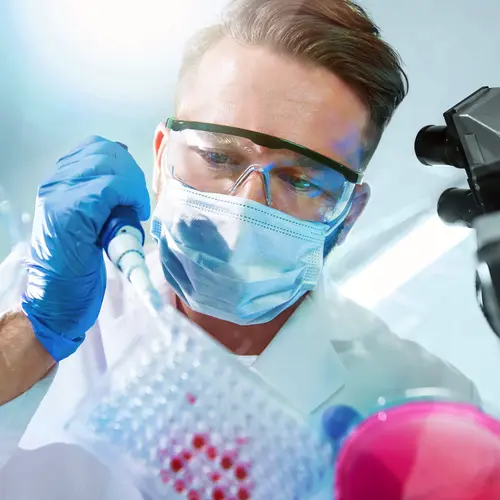A malar rash, or malar flush, is a rash on the nose and cheeks. Some call it a butterfly rash because of its shape. It’s almost always a symptom of another disorder, such as lupus or rosacea.
Malar Rash Symptoms
A malar rash is a red rash that appears across the face. It can be flat or have raised bumps. One sign of a malar rash is that it usually doesn't affect the folds of skin that run from your nose to your lips. The rash may come and go, or it may get progressively worse.
How Is a Malar Rash Diagnosed?
A malar rash is a symptom of an underlying condition, so your doctor will need to diagnose what's causing it. This can be difficult, but it's critical for proper care. Several conditions can cause the rash, and each requires specialized treatment.
An accurate diagnosis requires a physical examination and a complete medical history, including medications. Sometimes doctors will do a skin biopsy and examine the tissue under a microscope.
What Causes a Malar Rash?
Rosacea
Of the malar rash causes, the most common is rosacea, a skin condition that is not connected with a systemic disease. A rash from rosacea is red with small bumps and tiny broken blood vessels. It is most common in fair-skinned people. Up to 22% of people with fair skin may have rosacea.
Another name for rosacea is adult acne. It is usually diagnosed between the ages of 30 and 50. Factors that can trigger episodes of rosacea include:
- Sunlight
- Alcoholic drinks
- Spicy foods
- Hot drinks and hot baths
- Hot, cold, or windy weather
- Some cosmetics
Lupus
Another common cause of malar rashes is lupus, also known as systemic lupus erythematosus (SLE). Lupus is an autoimmune disorder that causes chronic inflammation. In lupus, the immune system attacks different parts of your body, including your organs and joints. It causes pain and fatigue, along with more serious symptoms.
About half of those with lupus experience malar rashes. Some people with lupus also have round, scaly patches of skin elsewhere on the body, especially in places exposed to the sun. You can have lupus that only causes skin problems, called cutaneous lupus or skin lupus. Some people with skin lupus will develop the systemic disease later.
Skin Infections
Two common bacterial skin infections can also cause a malar rash. Both are more common on the feet and legs but they can also occur on the face.
- Erysipelas: This is an infection of the upper layers of the skin. The streptococcus bacteria, commonly known as strep, usually causes erysipelas, although the staphylococcus bacteria (staph) can be to blame. Erysipelas causes an area of the skin to become shiny, red, and swollen. Blisters may form. Red streaks show that the infection is spreading.
- Cellulitis: This infection is most often caused by staph. It turns the skin a darker, sometimes purplish, color. Cellulitis can occur deeper in the skin and can affect muscles and connective tissue. It causes pain and swelling.
Rare Causes
A malar rash can occur along with two rare conditions:
- Pellagra: A lack of vitamin B3 (niacin) causes this condition. Those with pellagra often have a skin rash that resembles sunburn at first. The rash turns darker with time, and the skin may blister and flake. In many countries, foods are routinely fortified with niacin, so pellagra is rare.
- Dermatomyositis: This rare disease causes a red rash on sun-exposed skin. Other signs of dermatomyositis include red eyelids and hard calcium deposits under the skin. This disease also inflames and weakens muscles. It usually occurs in people between the ages of 50 and 70.
How Are Malar Rashes Treated?
Malar rash treatment can vary widely depending on the cause. Often, your response to treatment of the underlying condition will confirm your doctor's diagnosis.
Rosacea
Rosacea can't be cured, but your symptoms may improve with treatment. Doctors usually prescribe antibiotic creams or other topical medicines. Steroid creams often make the condition worse. Your doctor may prescribe oral antibiotics if your rash becomes inflamed.
Lupus
If you are diagnosed with lupus, you will need to control your exposure to the sun. Steroid injections and topical creams should improve the rash. Your doctor may prescribe hydroxychloroquine, an oral medication that can reduce your immune response.
Skin infections
Infections usually improve rapidly when treated with antibiotics given orally or intravenously.
Pellagra
A person with pellagra will usually improve within two days of beginning treatment with niacin supplements.
Dermatomyositis
There is no cure for dermatomyositis, but medications and physical therapy can help.
Should You See a Doctor for a Malar Rash?
Although many rashes are not serious, they can be signs of underlying conditions. You should see a doctor for any rash that:
- Covers the whole body
- Appears suddenly and spreads rapidly
- Occurs with a fever
- Causes pain
- Creates blisters
- Appears infected
A malar rash may not meet any of these criteria, although it can sometimes be painful or itchy. Many times, those with malar rash symptoms will see a doctor because of cosmetic concerns.

